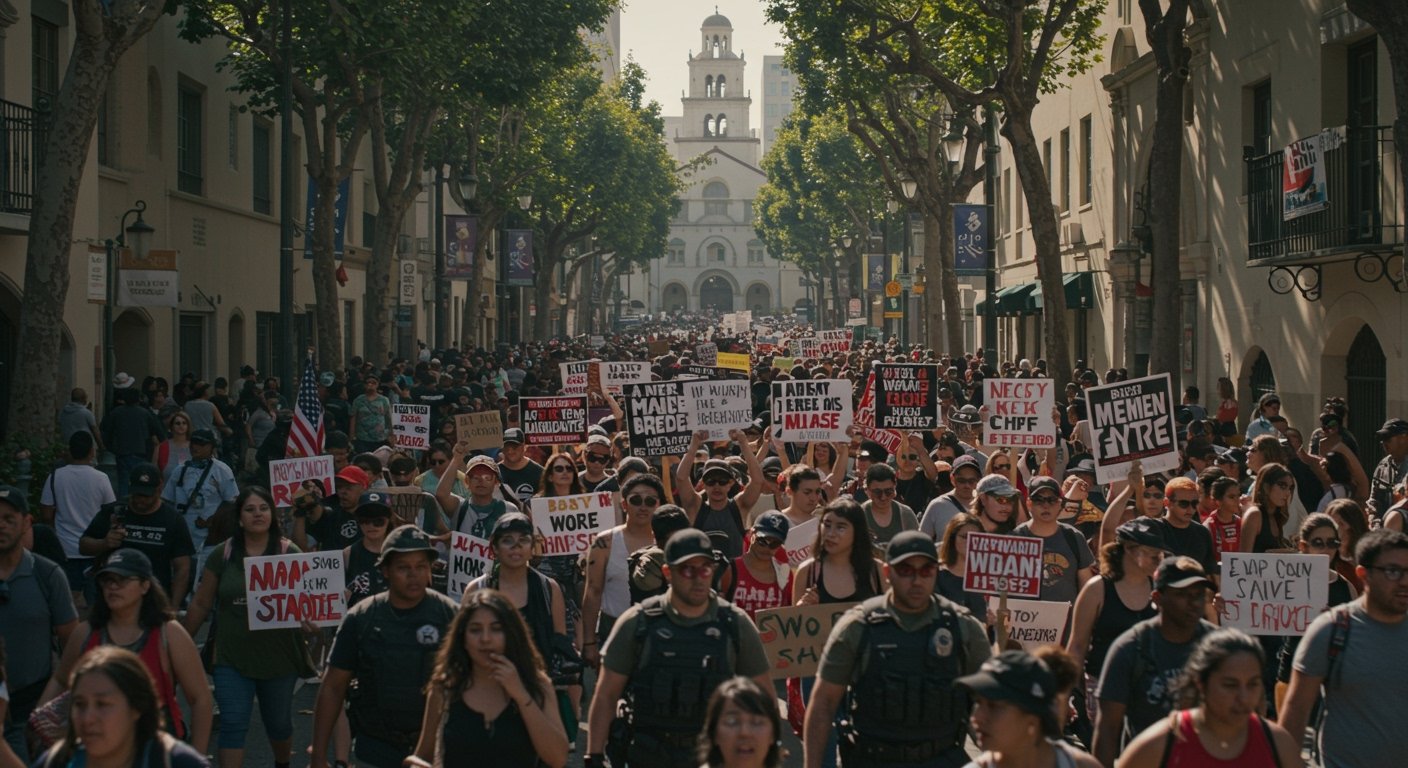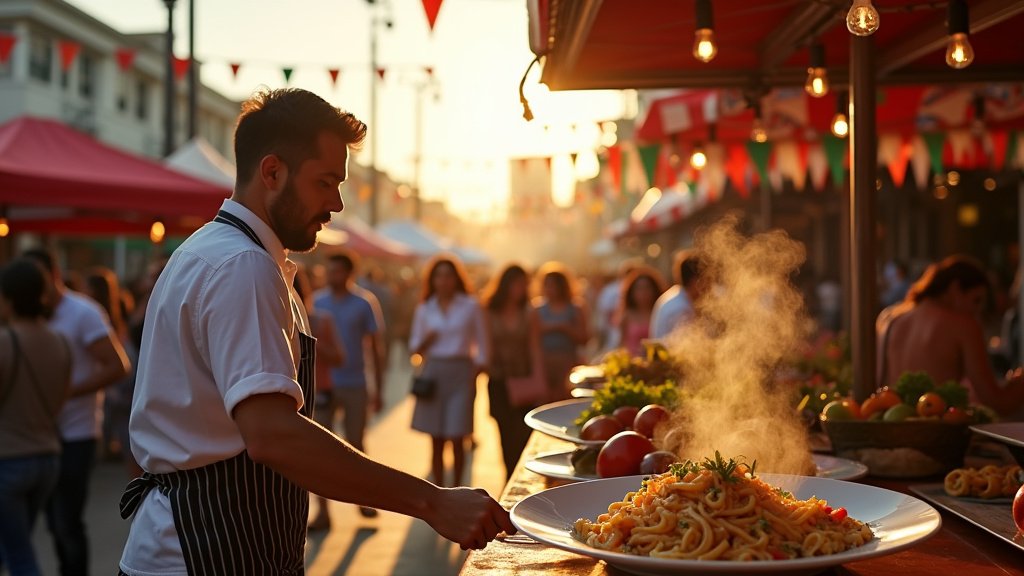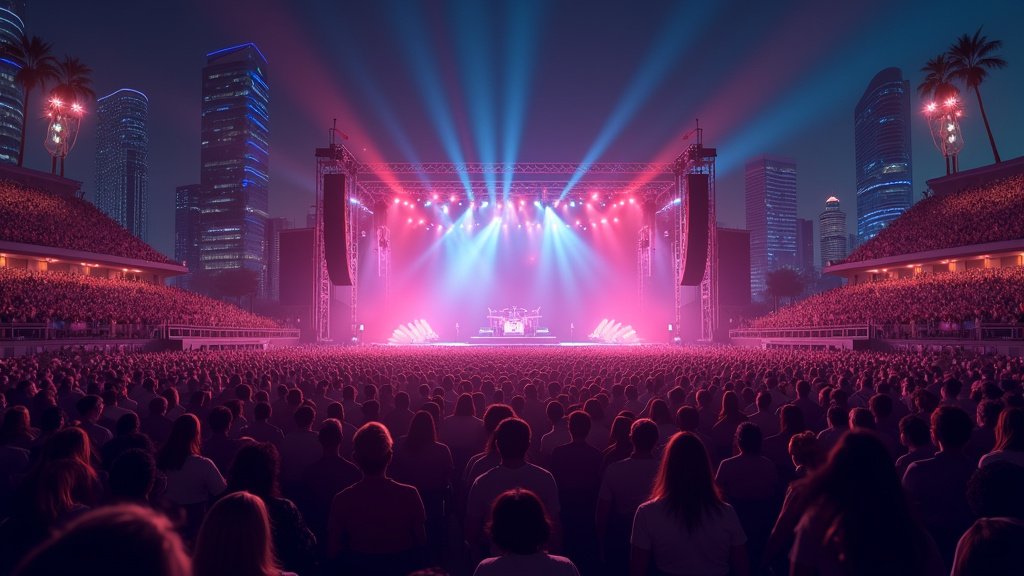LOS ANGELES – On a day typically marked by patriotic parades and fireworks, hundreds of individuals gathered in downtown Los Angeles on July Fourth to voice fervent opposition to recent federal immigration policies.
Foregoing traditional holiday celebrations, participants convened to protest what they described as a surge in immigration raids and a significant increase in federal funding allocated to these operations. The demonstration underscored the deep divisions surrounding immigration enforcement in the United States, bringing a sharp focus to federal actions during a national holiday.
Gathering in Downtown LA
The protest commenced with participants assembling in the downtown area. The crowd, numbering in the hundreds, was diverse, reflecting the myriad communities impacted by immigration policies. Many carried hand-painted signs bearing slogans critical of current enforcement practices and calling for policy changes.
Marching Through Olvera Street
The demonstration took the form of a march that wound its way through historic Olvera Street, a nod to the city’s foundational roots and a symbolic route for a movement addressing demographic and cultural shifts. As they marched, protesters amplified their message through persistent chants, echoing their dissent against federal actions.
The procession culminated outside the Edward R. Roybal Federal Building, a significant location as it houses the immigration court. This strategic choice of venue highlighted the protesters’ direct challenge to the institutional aspects of the immigration system they were protesting.
Voices of Dissent
Outside the Federal Building, the energy of the protest remained high. Demonstrators held their signs aloft, featuring messages that ranged from calls for human rights to direct critiques of government agencies. Chants resonated through the urban landscape, with participants repeatedly shouting slogans such as “No more occupation! No more deportation!” These particular chants encapsulated a core message of the movement, linking immigration enforcement to concepts of territorial control and forced removal, reflecting the protesters’ view of current policies.
Law Enforcement Presence
The demonstration was closely monitored by law enforcement. Police officers were present, observing the proceedings. Alongside them were military personnel, specifically tasked with guarding the Edward R. Roybal Federal Building. These guards were equipped with shields and guns, presenting a visible symbol of federal authority at the site. However, law enforcement maintained a clear distance from the main body of protesters throughout the event, allowing the demonstration to proceed without direct confrontation.
Duration and Documentation
The protest, a significant public expression of dissent on a national holiday, lasted for a few hours. It remained largely peaceful, characterized by the rhythmic sound of chanting and the visual impact of the signs.
The event was documented by professional photojournalists capturing the scene. Carlin Stiehl, a staff photographer for the Los Angeles Times, was among those present, documenting the gathering, the march, the messages conveyed by the protesters, and the overall atmosphere, including the careful monitoring by law enforcement.
Significance on Independence Day
The decision by hundreds to protest on July Fourth carried symbolic weight, contrasting the traditional themes of national independence and unity with a demonstration highlighting internal conflict and what protesters see as oppressive federal actions. It served as a potent reminder that for a segment of the population, the pursuit of liberty and justice includes challenging government policies impacting immigrant communities.
The Los Angeles demonstration was one of several events held across the country on July Fourth, highlighting ongoing national debates surrounding immigration reform, border security, and the methods employed in enforcing immigration laws. The protest in downtown Los Angeles provided a visual and audible manifestation of this debate within a major U.S. city.





